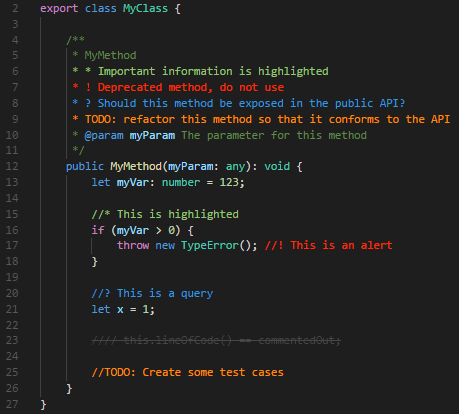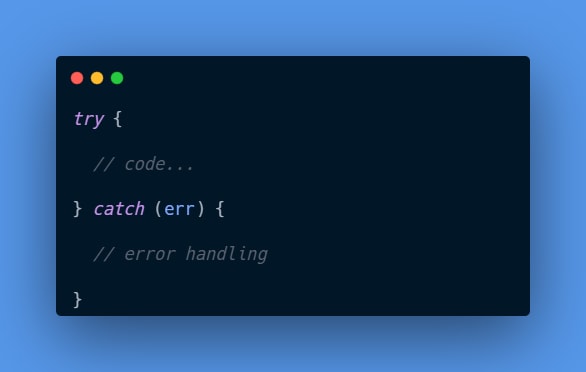Cover Image by Freepik
Introduction
Writing code is easy but writing readable code is tricky. When working as the sole developer, you might miss a lot of coding standards as you are the only one going to work on them. This is the scenario of every developer when they start writing code. But when you get into an organization where you have to code in the team, you might code like as usually you do. This is not a good practice in both scenarios.
There are coding standards that you can follow to enhance your code quality. Coding standards are a set of guidelines and conventions that developers follow when writing code. These standards ensure that the code is readable, maintainable, and consistent across a project or organization. This will not only elevate the performance of the code but also make it more readable by other developers on the team. This list is from a web developer’s perspective. You will find examples that are more suited for a web developer.
So, today we are going to look into some coding standards that you should integrate into your programming. Let’s get started.
Indentation and Formatting
Make sure that your code is not only working but also readable. Readable code will let other developers easily work on the project. There are various methods that you can use to make your code readable. We will discuss a few of them in this list. For this part, we need to make the code well-indented and formatted.
Code that is well formatted does not require a lot of attention to go through. As the developers have worked with such indentation. This makes the developers read the code more easily. You can make use of tools such as Prettier to make the code well formatted as per the programming language.
Naming Convention
One of the challenging tasks is to name variables and functions. There are various naming conventions that you can use. Here are some of them.
- Camel Case: In camel case, the first letter of the identifier is lowercase, and the first letter of each subsequent concatenated word is capitalized.
| Variables and Function | Class |
|---|---|
| myVariable | MyClass |
- Snake Case: Snake case uses underscores (_) to separate words.
| Variables and Function | Class |
|---|---|
| my_variable | my_class |
- Upper Case: In some cases, identifiers are written entirely in uppercase letters.
| Variables and Function | Class |
|---|---|
| MY_VARIABLE | MY_CLASS |
There are other naming conventions too. I don’t go through all of them and also which is better. Just use one naming convention and stick to it.
Comments and Documentation
Commenting on your code is another way of making the code readable. This can be from your perspective or other developers’. You can explain the uses of function, TODO, bug explanation, Algorithm steps, and others.
Here are some of the best practices that you use to write comments:
- Write your comments as such others can easily understand. It should be able to explain the purpose, functionality, or intent of the code.
- Put comments as such it provides context. You should If you’re referring to something specific, provide enough context for others to understand your comment. You should write a comment before the code. In-line comments should be used for small comments.
- Follow a consistent commenting style as per the programming language. There are various ways of commenting but choose one and stick with that for readability purposes.
- Be concise with your comments. Long and overly explained comments can become difficult to read.
- Don’t write comments for each line. As it will overshadow the important comments and also make the code full of comments.
- Self-explanatory steps and usually things should be exempt from commenting.
Tools such as Better Comments can help you in writing finer comments. Mintlify can help you in generating comments and documentation for your project.
Error Handling
Errors and exceptions are part of the code. It deals with identifying, capturing, and appropriately responding to any errors. It is a critical aspect of writing reliable code. Guidelines for handling errors and exceptions consistently throughout the codebase, ensuring proper error reporting, and logging.
Make sure that your code is always able to handle errors. For instance, while requesting an API. Your code should cover both scenarios that is success and failure. As per the response, create a log for developers and notify the user about the unsuccessful request. This is one such way of making your code error-proof.
Testing Application
Testing your application is a crucial step before shipping it into production. It simply involves the process of verifying that the application is behaving as it was intended. It also involves using the application to cover all the scenarios in that the user can interact with the application.
You can create a test plan that outlines the objective, test coverage, testing techniques, and timelines. This will help in sorting most of the things even before starting testing.
Some good practices that you can use while testing:
- Test Cases: You can write different test cases for specific scenarios to test different aspects of the application.
- Bug Tracking: During testing, it’s important to track and document any identified issues or bugs.
- Cover different tests: You should be able to test the application with various testing techniques to ensure that the application is reliable.
- Automate testing: Wherever possible try to automate the testing with tools. It will check for common issues and will also save a lot of time.
You can use the following techniques while testing the application:
- Unit Testing: It deals with testing individual units or components of the application in isolation. It involves testing functions, methods, or classes to ensure they work as intended.
- Integration Testing: It involves testing the interaction between different components or modules of the application.
- Regression Testing: Regression testing is carried out after making changes or enhancements to the software to ensure that existing functionality has not been adversely affected.
- Security Testing: As its name suggests, it deals with identifying vulnerabilities and weaknesses in the application.
Security
While writing code, you must follow security and performance-related guideline. You should avoid common vulnerabilities and also try to optimize the code for performance. Some common security vulnerabilities can be:
- Input Validation: You should enforce robust input validation. It will prevent vulnerabilities like injection attacks.
- Authentication and Authorization: A modern application needs both features today. You implement strong mechanisms such as using strong password hashing, enforcing password complexity, and role-based access.
- Data protection: You should not leak any data whether it is a user or sensitive API key. You should emphasize protecting sensitive data through techniques such as encryption, secure key management, and secure storage practices.
Conclusion
Implementing coding standards such as these will help you in achieving code quality. This will also ensure consistency, readability, and maintainability of the codebase, making it easier for developers to collaborate and understand each other’s code. This will minimize the occurrence of bugs and errors.
This will make the codebase more maintainable as there will be less work to be done after completing the project. Otherwise, you have to add many things after completing the code. I hope this article has helped you know some coding standards that you can implement in your code. Thanks for reading the article.











